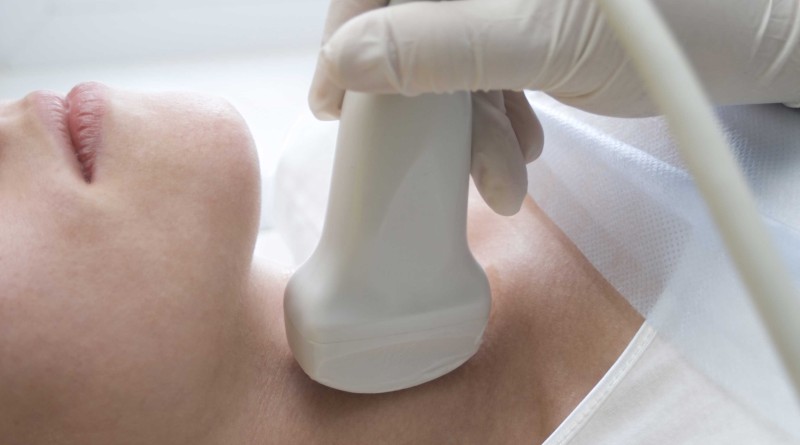Lurking Dangers
Prolonged exposure to tobacco and alcohol may lead to head and neck cancers. Making certain lifestyle changes can help in reducing the effects of these risk factors
By Dr A K Agarwal
If you often experience symptoms or signs like a lump or sore (for example, in the mouth) that does not heal, a sore throat that does not go away, difficulty in swallowing, and a change or hoarseness in the voice, you should immediately consult your doctor.
Sometimes people afflicted with head and neck cancer may not show any of these symptoms. Or, these symptoms may be caused by a medical condition that is not cancer. Since many of these symptoms can be caused by other, noncancerous health conditions as well, it is important to receive regular health and dental screenings. This is particularly important for people who routinely drink alcohol or currently use tobacco products or have used them in the past.
In fact, people who use alcohol or tobacco should receive a general screening examination at least once a year. This is a simple, quick procedure in which the doctor looks in the nose, mouth, and throat for abnormalities and feels for lumps in the neck. If anything unusual is found, the doctor usually recommends a more extensive examination.
If cancer is diagnosed, relieving symptoms remains an important part of cancer care and treatment. This may also be called symptom management, palliative care, or supportive care. Do talk with your health care expert about symptoms you experience, including any new symptoms or a change in symptoms.
Most head and neck cancers begin in the squamous cells that line the moist surfaces inside the head and neck. Tobacco and alcohol use, and human papillomavirus infection are important risk factors for head and neck cancers.
Rehabilitation and regular follow-up care are important parts of treatment for patients with head and neck cancers. Cancers of the head and neck are further categorised by the area of the head or neck in which they begin. These areas are described below:
Oral cavity includes the lips, the front two-thirds of the tongue, the gums, the lining inside the cheeks and lips, the floor (bottom) of the mouth under the tongue, the hard palate (bony top of the mouth), and the small area of the gum behind the wisdom teeth. The pharynx (throat) is a hollow tube about 5 inches long that starts behind the nose and leads to the esophagus. It has three parts: the nasopharynx (the upper part of the pharynx, behind the nose); the oropharynx (the middle part of the pharynx, including the soft palate [the back of the mouth], the base of the tongue, and the tonsils) and the hypopharynx (the lower part of the pharynx).
The larynx, also called the voice box, is a short passageway formed by cartilage just below the pharynx in the neck. The larynx contains the vocal cords. It also has a small piece of tissue, called the epiglottis, which moves to cover the larynx to prevent food from entering the air passages.
The paranasal sinuses are small hollow spaces in the bones of the head surrounding the nose. The nasal cavity is the hollow space inside the nose. The major salivary glands are in the floor of the mouth and near the jawbone.
Cancers of the brain, the eye, the esophagus, and the thyroid gland, as well as those of the scalp, skin, muscles, and bones of the head and neck, are not usually classified as head and neck cancers. Sometimes, cancerous squamous cells can be found in the lymph nodes of the upper neck when there is no evidence of cancer in other parts of the head and neck. When this happens, cancer is called metastatic squamous neck cancer with unknown primary.
Many head and neck cancers arise after prolonged exposure to known risk factors such as tobacco, alcohol, and cancer-causing agents in the workplace. These cancers are generally considered preventable. Others, such as parathyroid cancer, are not associated with any preventable risk factor. Some people who develop head and neck cancers have no known risk factors.
People who use tobacco (including cigarettes, cigars, pipes, and smokeless tobacco) or drink alcohol excessively are at much greater risk for developing head and neck cancers. An estimated 85 percent of head and neck cancers are linked to tobacco use. A smoker’s risk of developing cancer of the larynx (voice box) or hypopharynx (the top portion of the esophagus) is up to 35 times higher than that of a non-smoker. Heavy use of alcohol raises the risk of those cancers two to five times. Those who smoke and drink heavily may raise their risk to 100 times that of non-users.
Men are two to three times more likely than women to develop a head or neck cancer because of their greater use of tobacco and alcohol. However, women are catching up: the rates of head and neck cancers found in women have been rising for several years.
There are many risk factors for cancers of the head and neck. The people who use paan (betel quid) in the mouth should be aware that this habit has been strongly associated with an increased risk of oral cancer Poor oral hygiene and missing teeth may be weak risk factors for cancers of the oral cavity.
Use of mouthwash that has high alcohol content is a possible, but not proven, risk factor for cancers of the oral cavity. Certain industrial exposures, including exposures to asbestos and synthetic fibres, have been associated with cancer of the larynx, but the increase in risk remains controversial.
Making certain lifestyle changes can significantly lower a person’s risk of developing a head and neck cancer. Quitting smoking can substantially reduce the risk, even for those who smoked for many years. People who already have a head and neck cancer and quit using tobacco can reduce the risk of developing a second tumour by as much as 60 percent. People who are exposed to toxic fumes and dust in the work place or in other environments can reduce the risk of head and neck cancer by wearing protective face masks. Companies can also install air-filtering systems to minimise employees’ exposure to harmful fumes and dust.
(The author is Professor of Excellence, Ex-President, Delhi Medical Council and Medical Advisor, Apollo Hospital, New Delhi)


